Learn the easiest way to make yummy Asparagus Baby Food, whether you’re looking for a puree or a baby-led weaning option. I’ll share a 15-minute method for both, with flavor variations, storage tips, and the best info on how to shop for asparagus.
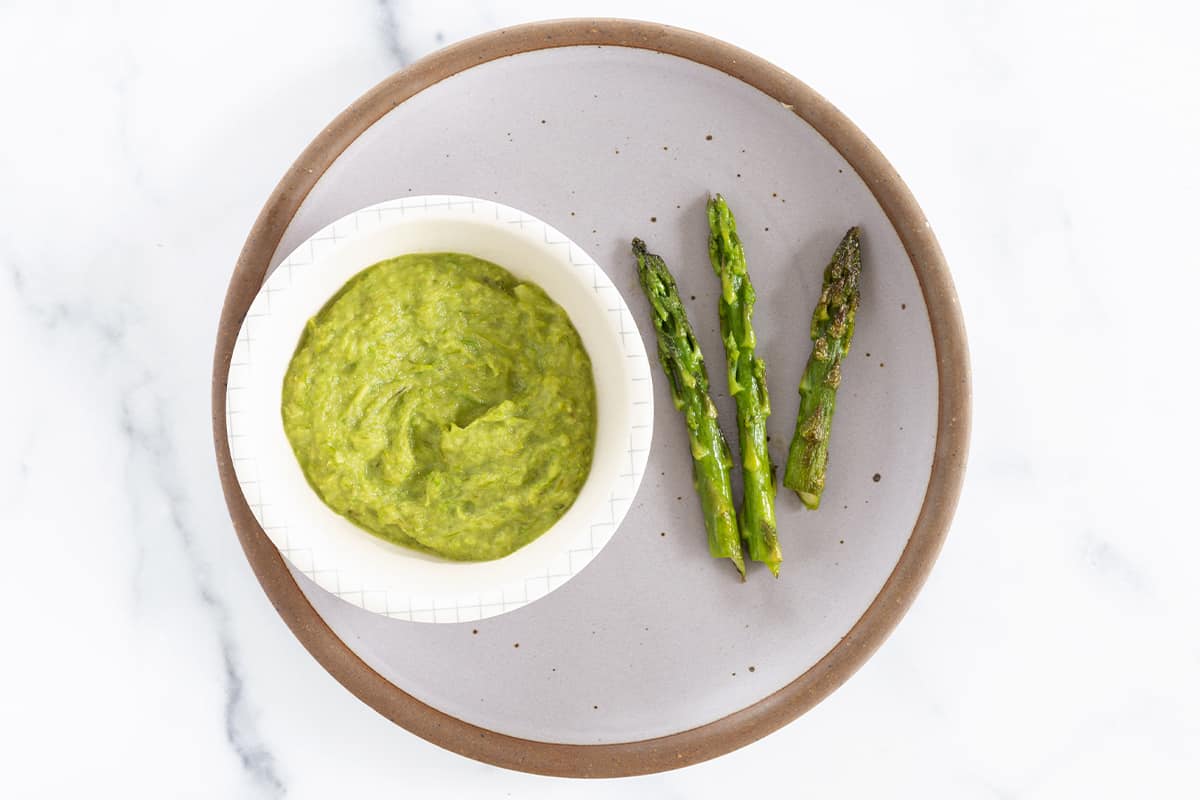
Asparagus Baby Food
Every spring, my craving for fresh asparagus strikes. And since you can usually find both fresh and frozen asparagus available all year long, you can make this baby food recipe whenever you’d like. The cooking method I’m going to share here is similar to the way I prepare Zucchini Baby Food, where we’ll sautee the vegetable in olive oil, then serve it up for self-feeding or puree for baby.
You can also try this method with roasted asparagus if you prefer. Both are easy and delicious. And the leftover puree can always be used as a pasta sauce if needed. (It’s seriously fresh!)
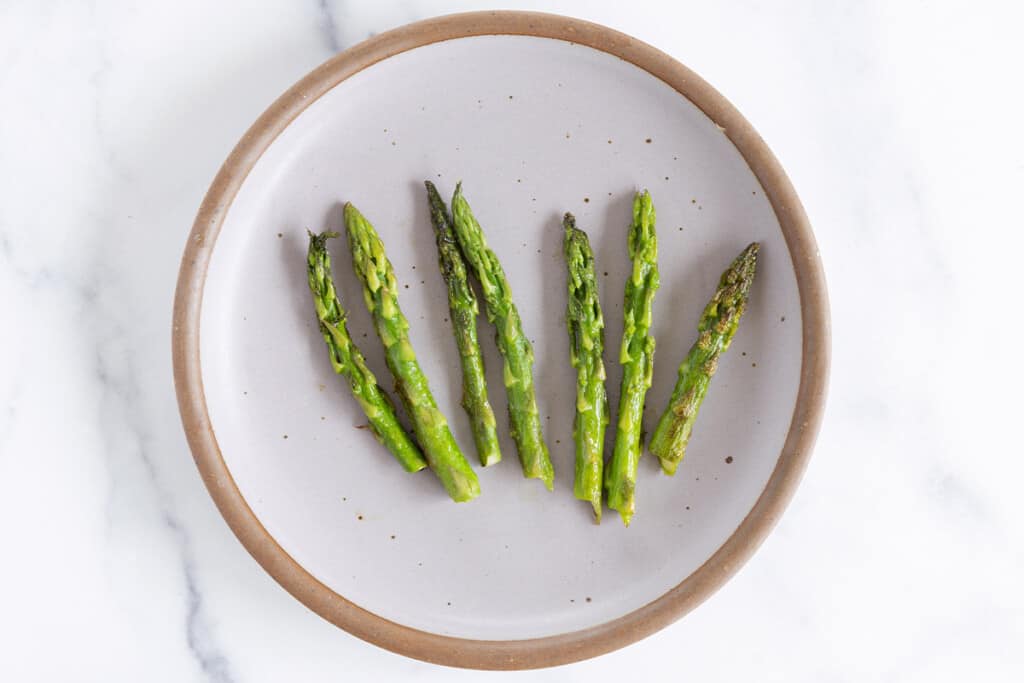
Baby-Led Weaning Asparagus
Asparagus is a great option for BLW since it’s already the right shape for a baby to easily hold and feed themselves. We’ll just prepare it to ensure that it’s soft and easy for baby to gum and eat.
I love this because baby gets to eat the same delicious asparagus side dish as us without needing to make any modifications. (Just set some aside for baby before adding salt.)
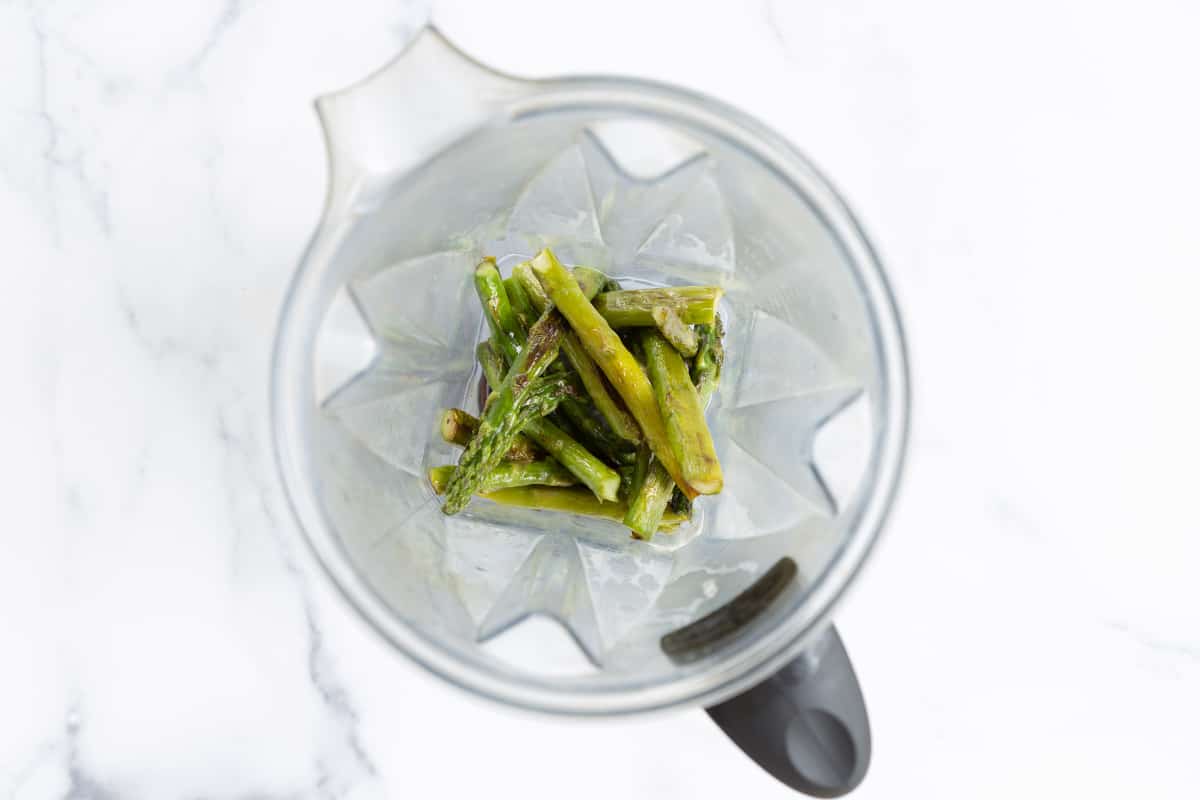
Asparagus Puree
To make the puree option, we’ll cook the asparagus until soft, then blend it with a little no-added-salt chicken (or vegetable) broth. There are options to add flavor, nutrients, and texture with potatoes, fully cooked rice or quinoa, or avocado as you like.
The additions can turn it into a Baby Food Combination or simply help the vegetable puree be a little more filling for baby.
Ingredients You Need
Here’s a look at what you need to make this baby food recipe.
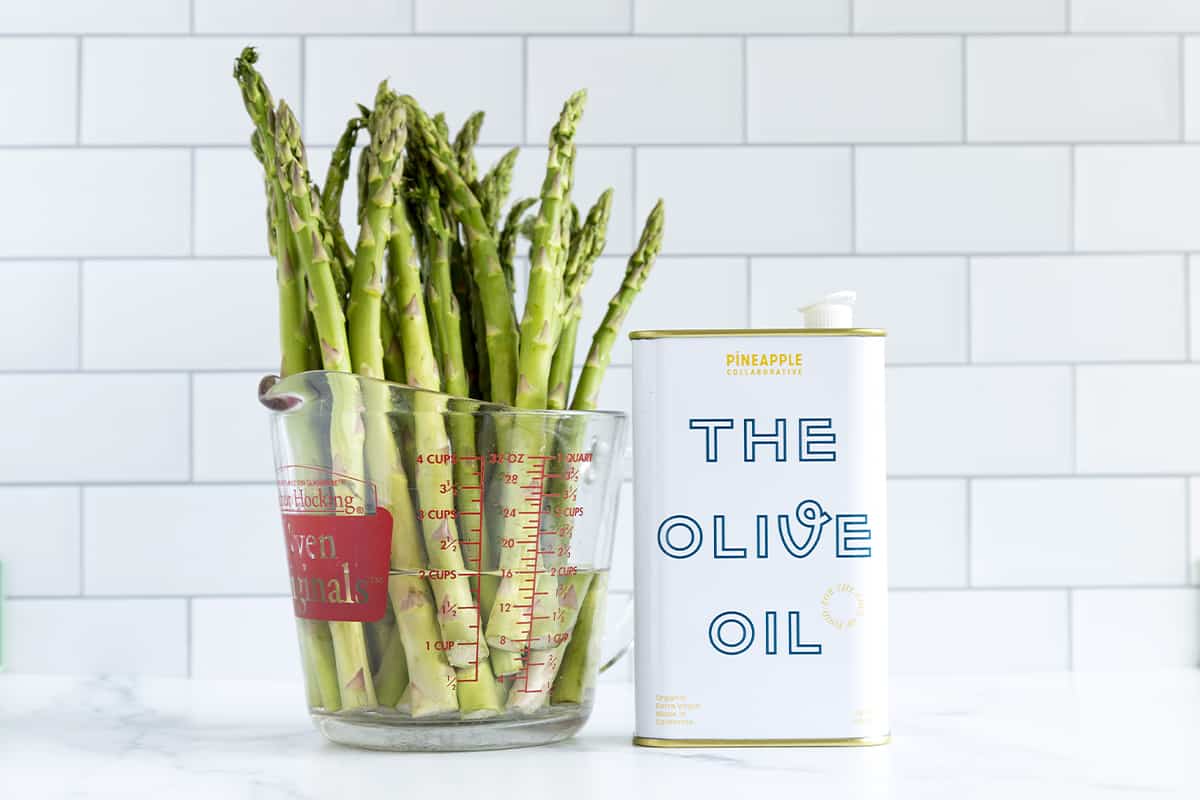
- Asparagus: You can use any thickness of asparagus, so find ones that look fresh, have tips that are tight (as opposed to starting to flower, which can be a sign that they’re about to bolt and may be bitter). You can also use frozen asparagus if you prefer.
- Olive oil: I use extra virgin olive oil to add healthy fats and flavor to this vegetable recipe.
- Optional: You will have the option in the puree to add potatoes, fully cooked rice or quinoa, or avocado to turn this into a baby food combination with additional nutrients and texture.
Step-by-Step Instructions
Here’s how to make this asparagus recipe so you know what to expect. Scroll down to the end of the post for the full recipe.
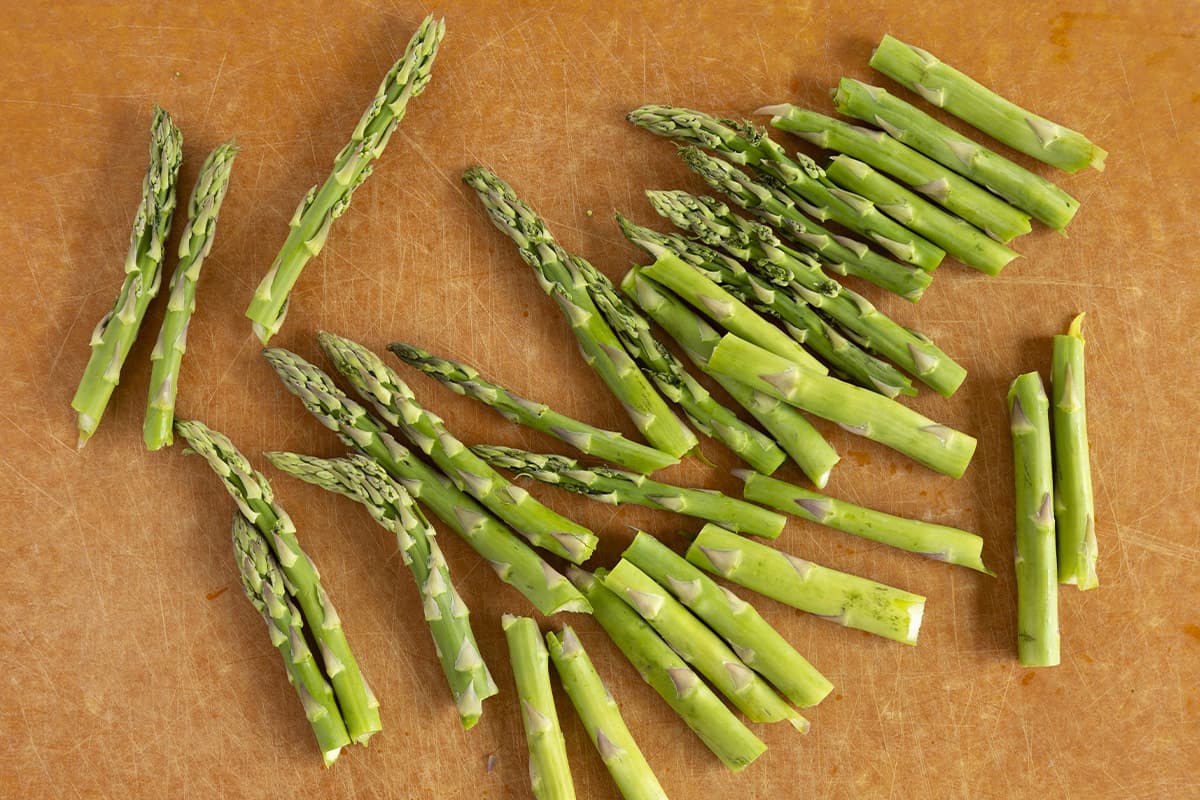
- Break off the bottom inch or so of the asparagus stalk. (It will naturally break where it starts to be less tender.) Break stalks in half or thirds to make pieces about 3 inches long.
- Add olive oil to a pan over medium heat. When warm, add the asparagus. Toss to coat. Cover and cook for 6-8 minutes, or until the asparagus is tender when poked with a fork.
- Let cool slightly and serve baby-led weaning style. Or, transfer to a blender with chicken or vegetable stock and any of the optional add-ins, if using, and blend smooth to make a puree.
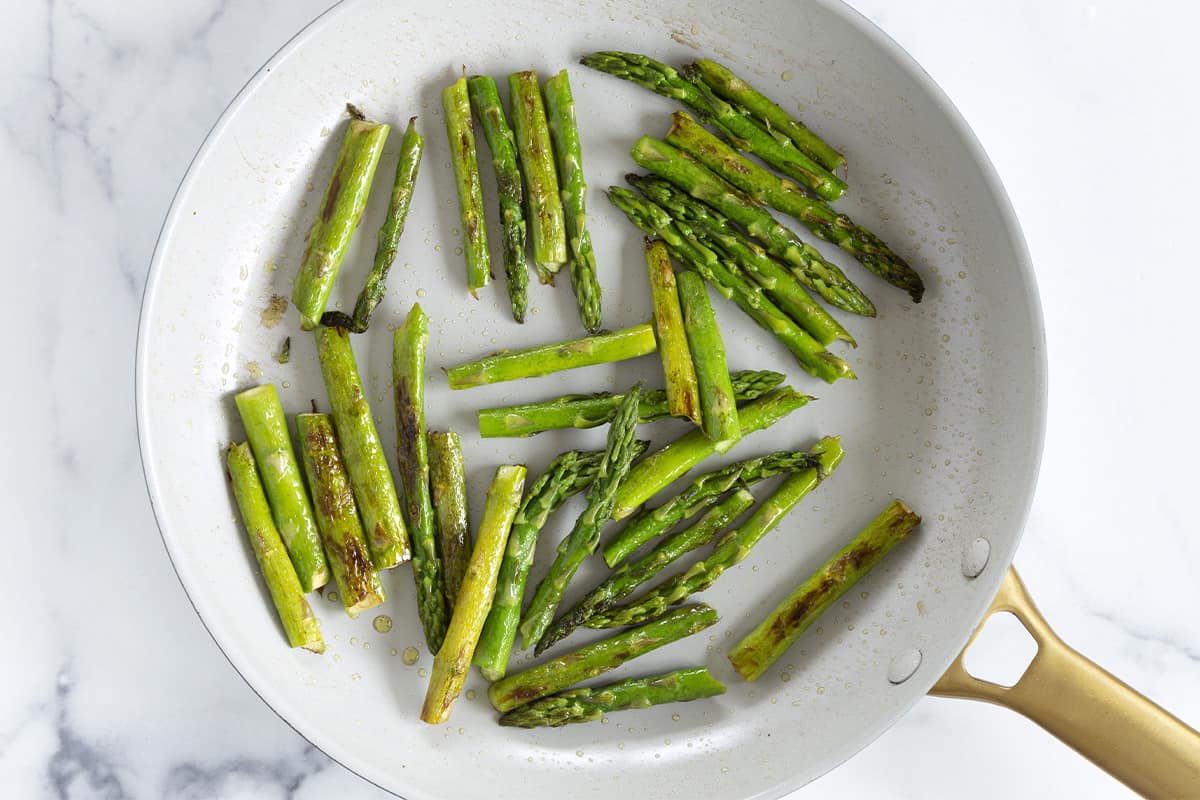
Frequently Asked Questions
Asparagus can be a great source of nutrients, including fiber, folate and vitamins A, C and K. It’s also a delicious seasonal food to share in the spring if you can find some locally available. (The one downside is that you may have some strongly scented diapers.)
Yes, baby can have pureed asparagus soon after starting solids, which is typically around 6 months.
You can either cook the stalks until tender and serve baby-led weaning style, where baby feeds himself, or you can blend the soft asparagus into a puree. Both are easy options for a baby.
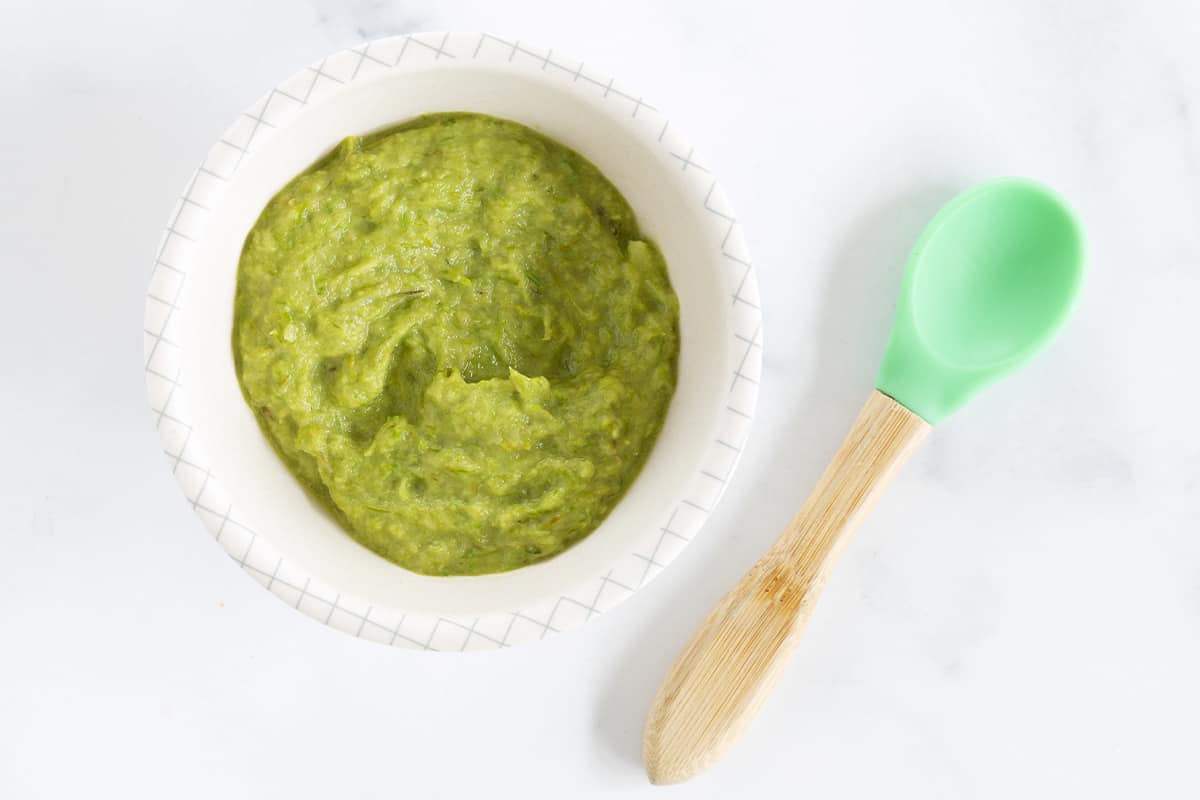
How to Store
Store the cooked spears or prepared puree in airtight containers in the fridge for up to 5 days. You can also freeze baby food for future weeks if that works better for you.
(You may also enjoy Apricot Baby Food.)
Best Tips for Success
- Choose a bunch of asparagus with approximately the same thickness, if possible, so they cook for the same time.
- Remove the bottom inch or so from the stalks, as that is usually a less tender part of the plant.
- Cook until soft so it’s easy for baby to eat or for you to blend.
- See options to turn this into a baby food combination.
- Use leftover puree as a pasta sauce. Add a little fresh lemon zest and juice, Parmesan cheese, and salt to round out the flavors.
Related Recipes
Baby Food
Favorite Carrot Baby Food
Baby Food
Easiest Pea Puree
Baby Food
Favorite Sweet Potato Baby Food
Baby Food
Extra-Veggie Baby Pasta
I’d love to hear your feedback on this post, so please comment and rate the recipe below.
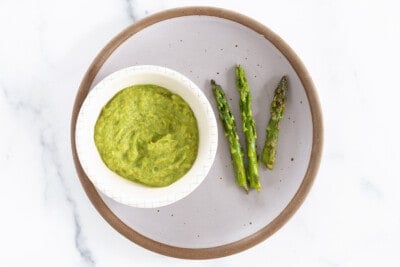
Favorite Asparagus Baby Food
Ingredients
- 1 bunch asparagus
- 1 tablespoon olive oil
- 2 tablespoons avocado or fully cooked potato, rice, quinoa (optional for the puree)
- 2-4 tablespoons no-salt-added chicken stock (or vegetable stock, breastmilk, or formula)
Instructions
- Break off the bottom inch or so of the asparagus stalk. (It will naturally break where it starts to be less tender.) Break stalks in half or thirds to make pieces about 3 inches long.
- Add olive oil to a pan over medium heat. When warm, add the asparagus. Toss to coat. Cover and cook for 6-8 minutes, or until the asparagus is tender when poked with a fork.
- Let cool slightly and serve baby-led weaning style.
- Or, transfer to a blender with chicken or vegetable stock and any of the optional add-ins, if using, and blend smooth to make a puree.
Notes
- Store the puree in airtight containers in the fridge for up to 5 days. Or freeze in an ice cube tray overnight, transfer to a freezer bag, remove as much air as you can and freeze for up to 6 months. Thaw 1-2 cubes overnight in the fridge in a container or at room temperature for about an hour.
- Choose a bunch of asparagus with approximately the same thickness, if possible, so they cook for the same time.
- Remove the bottom inch or so from the stalks, as that is usually a less tender part of the plant.
- Cook until soft so it’s easy for baby to eat or to blend.
- Add a few basil, spinach, or parsley leaves to enhance the green color.
- Mix with Bean Puree, Apple Puree, Pea Puree, or Spinach Puree as desired.
- Use leftover puree as a pasta sauce. Add a little fresh lemon zest and juice, Parmesan cheese, and salt to round out the flavors.
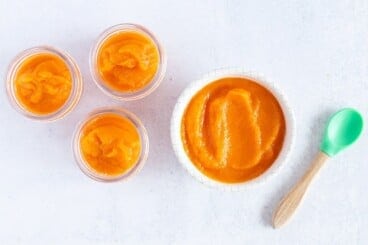
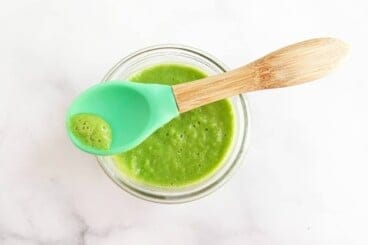
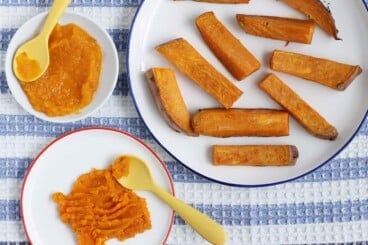
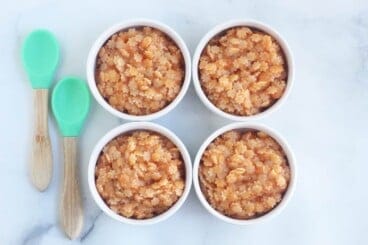


















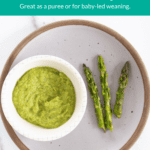
All comments are subject to our Terms of Use.